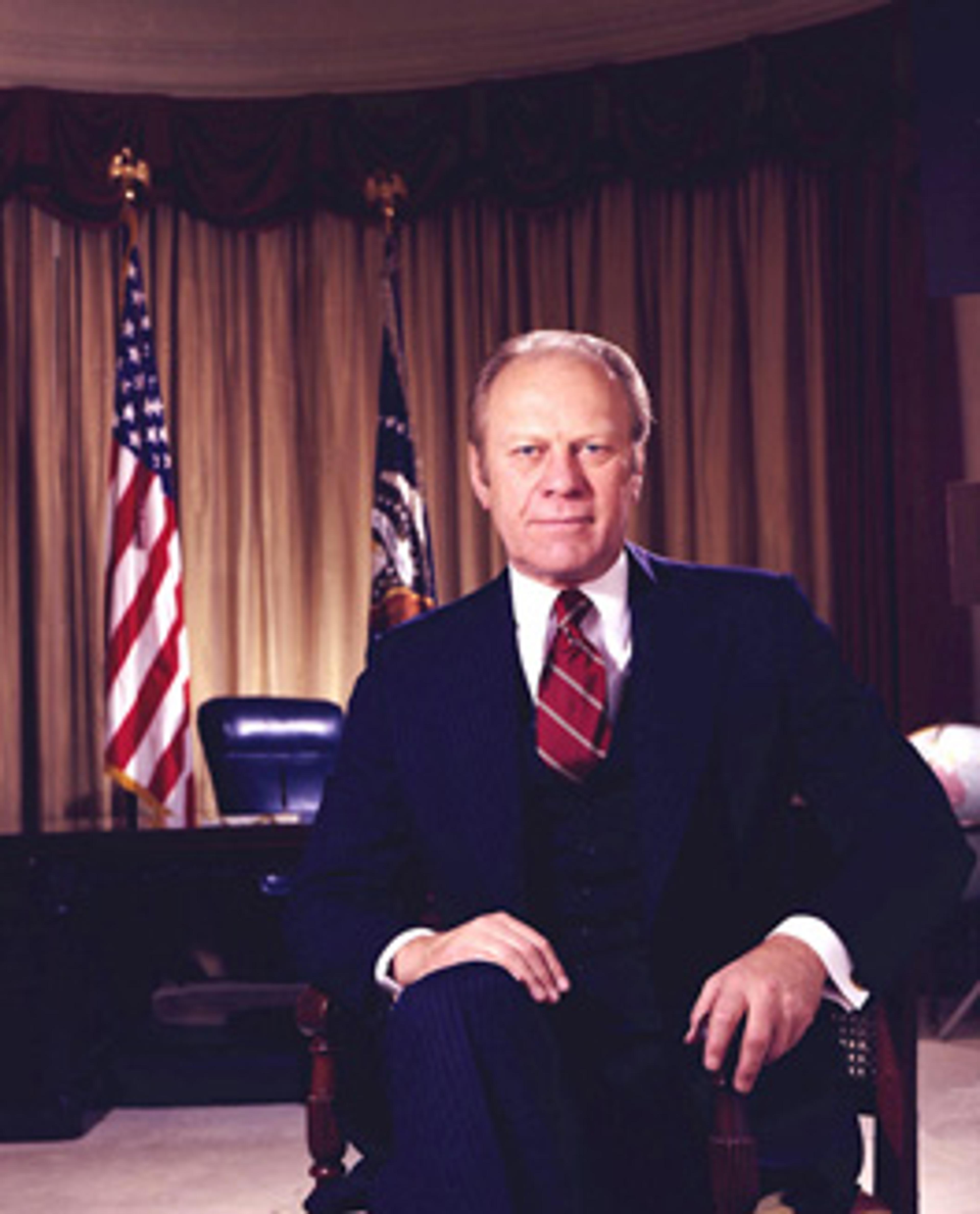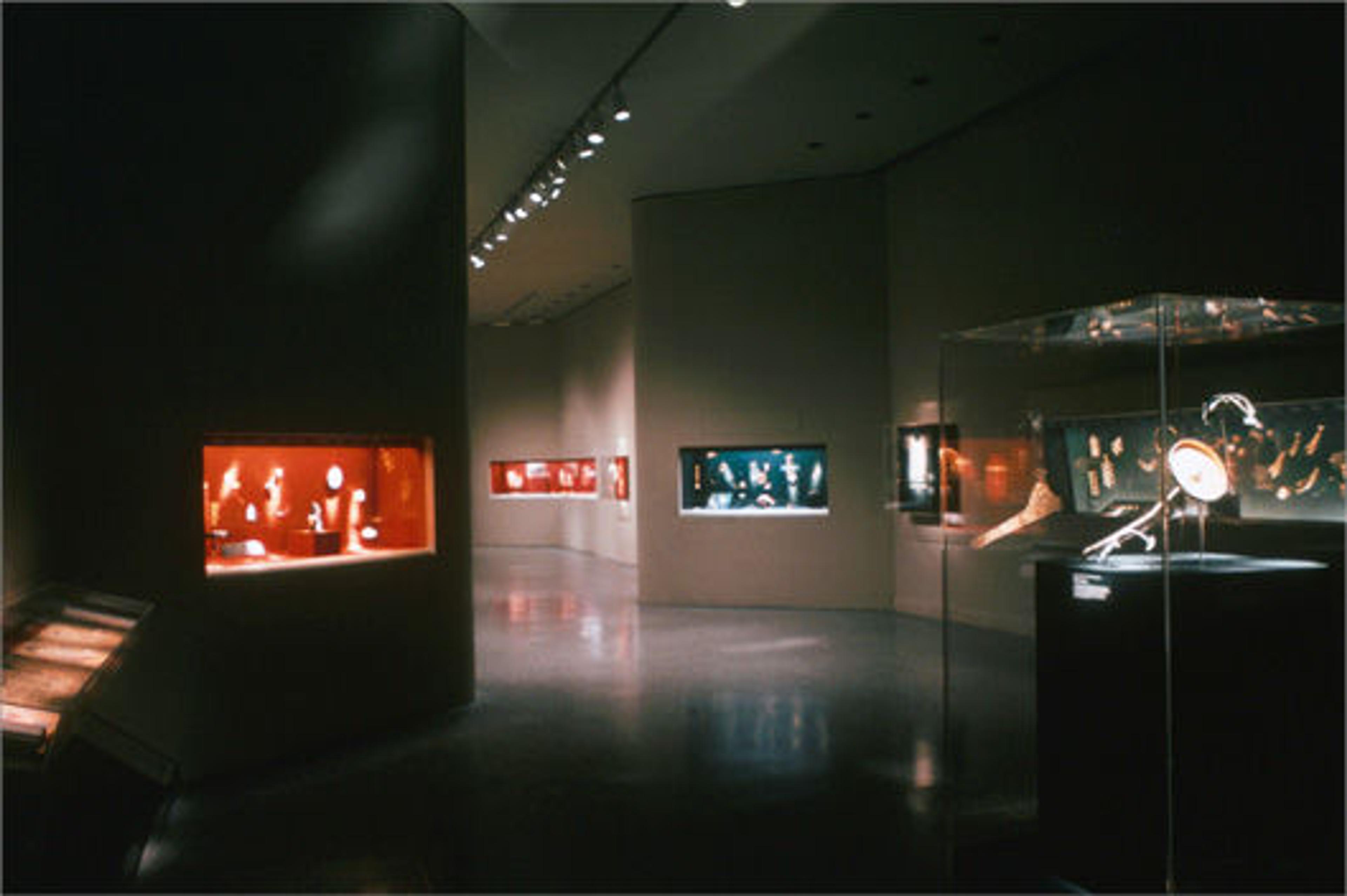Today in Met History: December 20

President Gerald R. Ford, February 1976
«Thirty-five years ago today, on December 20, 1975, United States President Gerald R. Ford signed into law the Arts and Artifacts Indemnity Act (PDF), which gave the Federal Council on the Arts and the Humanities the authority to insure international exhibitions that traveled from overseas to U.S. museums. This legislation was a watershed moment in the history of art exhibitions in the United States, making it possible for museums around the world to collaborate with U.S. institutions on traveling loan shows while minimizing insurance costs to the participating institutions.» All indemnity agreements were backed by the full faith and credit of the United States Treasury in the event of loss or damage to an artwork. The Metropolitan Museum of Art was a key player in the movement to draft and pass this important law.
In 1972, members of the Met's leadership met with staff of such peer institutions as the Smithsonian, the Philadelphia Museum of Art, and the International Council of Museums to consider the issue of insurance costs for traveling exhibitions. In April 1973, led by the Metropolitan's board president, Douglas Dillon, the museum community submitted a draft legislative proposal to the National Endowment for the Arts. Vice Director for Finance Daniel Herrick, Registrar John Buchanan, and Secretary Ashton Hawkins—all from the Met—also played significant roles in developing, revising, and advancing this proposal. The program they envisioned was largely modeled on the British indemnity system, which had been in place since the late 1950s.
A year after the museum community's proposal to the NEA, the Metropolitan undertook an individual initiative to secure government-backed insurance for a major exhibition of Scythian gold on loan from the State Hermitage Museum in Saint Petersburg and the State Museum of the Kiev-Pechersk Lavra. In October 1974, Congress approved special legislation insuring the show’s trip to the U.S., and the Soviet government reciprocated by indemnifying American and European paintings that were sent overseas by the Metropolitan.

One of the galleries in the 1975 exhibition From the Lands of the Scythians
The coordinated effort to enact a permanent indemnity program gained momentum in 1975. In June and July of that year, Congressional hearings considered revised versions of the original 1973 proposal. Douglas Dillon and Met Director Thomas Hoving each testified in support of the creation of an indemnity program. Hoving pointed out to members of the House of Representatives that from 1970 to 1975, the Met had hosted nine exhibitions involving international exchanges, with insurance costs of $818,000, and that some of this money had come from the federal government in the form of exhibition support grants from the National Endowment for the Humanities and the National Endowment for the Arts.
The Senate and House each passed indemnity bills in the fall of 1975, and on December 20 President Gerald Ford signed the act into law. The National Endowment for the Arts was authorized to administer the program on behalf of the Federal Council on the Arts and Humanities. In December 2007, Congress expanded eligibility under the program to include coverage for works of art owned by U.S. entities while on exhibition in the United States. The program has indemnified nearly one thousand exhibitions, saving the organizers nearly $300 million in insurance premiums.
James Moske is managing archivist in the Museum Archives.
Related Links
Text of the Arts and Artifacts Indemnity Act: www.nea.gov/grants/apply/Indemnity/TheAct.pdf (PDF)
Text of President Ford's statement on signing the act: www.presidency.ucsb.edu/ws/?pid=5450
James Moske
James Moske is the managing archivist in the Museum Archives.